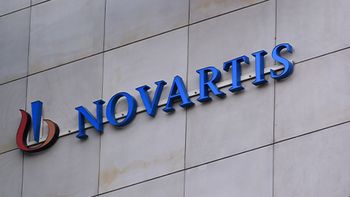
How CNPVs Could Reshape US Drug Manufacturing
In the first part of his Pharma Commerce video interview, Brad Stewart, BDO’s national life sciences co leader, explains why large-volume, high-need drugs—especially those heavily sourced overseas—may be the strongest candidates, and how the pandemic’s supply chain lessons are influencing the program’s future direction.
In a recent discussion with Pharmaceutical Commerce, Brad Stewart, BDO’s national life sciences co-leader, dives into the role of the Commissioner’s National Priority Vouchers (CNPVs)—a program designed to incentivize pharmaceutical activities that support US national interests, including domestic manufacturing. The industry is still waiting to see how the FDA Commissioner’s office will determine which drugs or manufacturers qualify for these vouchers, as the decision-making framework has not yet been fully clarified. Although CNPVs are widely viewed as a valuable opportunity, the criteria for selection remain somewhat opaque.
One of the program’s stated goals is to bolster domestic drug production, particularly for products considered essential for national security or for strengthening the US healthcare supply chain. However, Stewart notes that most CNPVs issued to date have not been tied directly to manufacturing-related reasons. Only two vouchers so far have been awarded specifically for domestic production, each aimed at bringing large-volume, medically important drugs back to US manufacturing sites. These cases involved one antibiotic and one anesthetic—both categories of drugs that the US has historically struggled to maintain stable access to, especially during global disruptions.
Stewart highlights that the strongest candidates for future CNPVs may be high-volume products critical to the US healthcare system where the majority of supply is currently sourced internationally. He points to lessons learned during the COVID-19 pandemic, when the nation faced acute shortages of several foundational medicines. Drugs that demonstrated vulnerability in supply during that time—particularly those with heavy overseas reliance—could represent the most immediate opportunities for manufacturers seeking to qualify for an NPV.
Overall, while the pathway to securing a voucher is not yet firmly established, Stewart emphasizes that companies with essential, widely used drugs and a compelling case for onshoring production may be best positioned as the program’s direction becomes clearer.
He also shares whether he believes the shortened review times offers enough return on supply chain investment; the definition of manufacturing commitment; how to measure the long-term value of CNPV; and much more.
A transcript of his conversation with PC can be found below.
PC: What operational and financial challenges do manufacturers face when committing to on-shore production in order to qualify for a CNPV?
Stewart: The National Priority Vouchers are sort of an evolving opportunity for people. We don't clearly understand yet how the Commissioner's office is going to make the decisions on which drugs or for what reasons they award vouchers. It's clearly a great opportunity, and one of the stated priorities is helping to onshore manufacturing or improve domestic manufacturing for national security, for the interest the United States. There's certainly an opportunity there.
So far out of the vouchers that have been issued, most of them have not been for that reason. There's only been two I can think of off the top of my head that were specifically for manufacturing. Those have been focused on pretty large-scale drugs to try and bring manufacturing back to the United States, or increase manufacturing in the United States. One was for an antibiotic, and the other is for an anesthetic.
I think, based on the data that's available now, the first is, do I have something like that? Is there a very large-volume product that's needed in the United States, where most of the supply comes from outside the United States? If you think back to the pandemic, the drugs that we really struggled to get here, that that may be the most immediate opportunity for manufacturers.
Newsletter
Stay ahead in the life sciences industry with Pharmaceutical Commerce, the latest news, trends, and strategies in drug distribution, commercialization, and market access.




